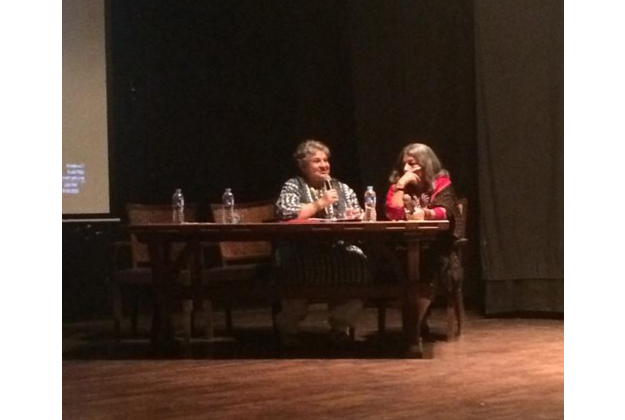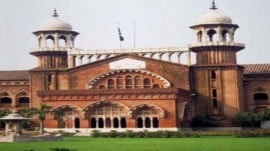
Organised by the Lahore Biennale Foundation, the event brought together several prominent speakers from South Asia.
Urvashi Butalia, a publisher, spoke about the concept of borders and the impact it had had on her life. “In 1947, one of my maternal uncles decided to stay back in Pakistan along with my grandmother. He became Ghulam Muhammad Sheikh and my grandmother became Ayesha,” said Butalia.
She said that after coming to Pakistan and hearing her uncle’s side of the story, she was introduced to a different perspective on the partition of India. She said she had developed an interest in exploring the impact of violence on people after her interactions with survivors of riots following Indra Gandhi’s assassination. Later, she said she proceeded to exploring stories of partition survivors.
She suggested that a museum about partition, managed jointly by Pakistan and India, be established in the region. “My dream is that the museum be located at Wagah border. It will allow viewers on both sides to interact,” she said.
Leela Gandhi, professor from the University of Chicago and great grand-daughter of Mahatma Gandhi, spoke about her research on post-colonial ethics and the practice of democracy. “We need to understand our own history,” she said.
Rana spoke about the purpose and installation of his work, which was part of an on-going exhibition in Venice at the Palazzo Benzon titled: My East is Your West. Rana’s work is being displayed there alongside Shilpa Gupta’s. Gupta is an internationally renowned artist from Mumbai, India. The project has been put together by the Gujral Foundation in collaboration with the 56th Venice Biennale 2015.
“Despite the fact that relationship between the two countries has been difficult, I did not want the exhibition to focus on that. I did not want it to be presented as an India-Pakistan pavilion,” he said. It should be seen as a work on borders completed by artists from Lahore and Mumbai.
Both the artists said that they had a continuous conversation about their ideas, but had worked independently. “We both found that one of the key interests in our works was perception,” said Gupta, adding that it dealt with how different things were viewed by people. The artists took the audience through some of the pieces displayed in Venice. Rana reconstituted various paintings digitally to create similar images. When viewed from afar, they appear to be the same as the original. However, the viewer finds that they have been put together differently upon closer inspection. He also used projections to distort time and space.
Published in The Express Tribune, September 20th, 2015.






































COMMENTS
Comments are moderated and generally will be posted if they are on-topic and not abusive.
For more information, please see our Comments FAQ